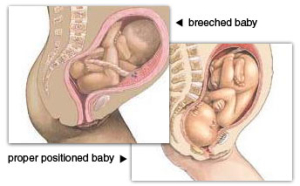Pregnancy
Pregnancy Adjustments and Pregnant Women Massage Available
Pregnancy Adjustments and Pregnant Women Massage Available

Chiropractic care throughout pregnancy allows for healthier function of the mother and baby. Specific techniques tailored to pregnant mothers create balance in the mother’s pelvic bones and therefore reduce the possibility of intrauterine constraint offering the baby the ability to get into the best possible position for birth. This leads to an easier and safer delivery for both the mother and baby. Seeking chiropractic care early in pregnancy is a safe, effective way to support the natural process of birthing.
Chiropractic care benefits all aspects of your body’s ability to be healthy. Chiropractic care is essential for the pregnant mother. Her systems and organs are now providing for two; their optimal functions are critical for the baby’s healthy development. The mother’s spine and pelvis undergo many changes and adaptations to compensate for the growing baby and the risk of interference to her nervous system is increased. Specific chiropractic care throughout pregnancy works by enhancing nervous system function providing greater health potential for both the mother and baby.
Another important reason for care throughout pregnancy is to help establish balance in the mother’s pelvis. Because of a lifetime of stress and trauma to her spine and pelvis, her pelvic opening may be compromised, resulting in a less than optimum passage for the baby. Williams Obstetrics Text tells us that, “Any contraction of the pelvic diameters that diminish the capacity of the pelvis can create dystocia (difficulty) during labor.” They further state that the diameter of the woman’s pelvis is decreased when the sacrum is displaced. Dr. Abraham Towbin, medical researcher on birth, tells us that the bony pelvis may become “deformed” this way by trauma. Chiropractors define this displacement/ deformation as spinal misalignment or subluxation primarily caused by the stress of trauma.
Additionally, these compensations to the mother’s spine and pelvis during pregnancy are likely to cause an imbalance to her pelvic muscles and ligaments. The mother’s pelvis supports her growing uterus with specific ligaments. When the pelvic bones are balanced, the uterus is able to enlarge symmetrically with the growing baby. If the bones of the pelvis are out of alignment or subluxated, this will directly affect the way the uterus will be supported. Unequal ligament support of the uterus will torque the uterus reducing the maximum amount of room for the developing baby. The term used to describe this is intrauterine constraint.
In some cases, this constraint restricts the baby’s positions during pregnancy adversely affecting the infant’s developing spine and cranium. Additionally, these limitations on the baby’s movement during pregnancy may prevent the baby from getting into the best possible position for birth. Any birth position other than the ideal vertex, occiput anterior position of the baby indicates the inhibiting effects of constraint. Such positions lead to longer, more painful labors with increased medical interventions into the birthing process. Often caesarian sections (c-sections) are resorted to and both the mother and baby miss the many benefits of a natural vaginal birth.
The Webster Technique, discovered by Dr. Larry Webster, founder of the International Chiropractic Pediatric Association (ICPA), is one such specific chiropractic adjustment for pregnant mothers.
The Webster technique is a specific chiropractic analysis and diversified adjustment. This adjustment is a safe means to restore proper pelvic balance and function. The goal of the adjustment is to reduce the effects of sacral subluxation/ SI joint dysfunction. In so doing neuro-biomechanical function in the pelvis is improved.

This specific sacral analysis can be used on all weight bearing individuals to determine S/I joint dysfunction/ sacral subluxation and is therefore applicable for the entire population. The assessment includes heel flexion to buttocks, with restricted flexion indicating the affected SI joint. Correction is made with a diversified, sacral adjustment. It is used on all weight bearing individuals presenting with this biomechanical restriction. Common symptoms include (but are not limited to) low back pain, sciatic neuralgia, and symptoms associated with sacral subluxation and/ or S/I joint dysfunction.
The ICPA recognizes that in a theoretical and clinical framework of the Webster Technique in the care of pregnant women, sacral subluxation may contribute to difficult labor for the mother (i.e., dystocia). Dystocia is caused by inadequate uterine function, pelvic contraction, and baby mal-presentation.32 The correction of sacral subluxation may have a positive effect on all of these causes of dystocia.
In this clinical and theoretical framework, it is proposed that sacral misalignment may contribute to these three primary causes of dystocia via uterine nerve interference, pelvic misalignment and the tightening and torsion of specific pelvic muscles and ligaments. The resulting tense muscles and ligaments and their aberrant effect on the uterus may prevent the baby from comfortably assuming the best possible position for birth.
In regards to pregnant mothers, Dr. Webster reported that when a mother sought care and her baby was in a breech position, the restoration of pelvic neuro-biomechanics with this adjustment also frequently facilitated optimal fetal positioning. There are cases published in the chiropractic literature that support this theory. More research is needed and is currently underway by the ICPA.
The obstetric literature has determined that correct positioning of the baby in-utero affect birth outcome and decrease the potential for undue stress to the baby’s developing spine and nerve system. Obstetric literature has determined the importance of normal pelvic neuro-biomechanics including uterine function and pelvic alignment for the prevention of dystocia (difficult birth). It has also determined that correct positioning of the baby in-utero affects birth outcome and decreases the potential for undue stress to the baby’s developing spine and nerve system. Chiropractic literature has determined the significance of sacral adjustments in normalizing pelvic neuro-biomenchanics.
It is therefore considered prudent that this specific sacral analysis and adjustment be used throughout pregnancy to detect and alleviate sacral imbalance and optimize pelvic neuro-biomechanics in the mother. Because of the particular female adaptations from the increase of hormones, weight gain and postural adaptations, pregnant mothers have a greater chance of sacral subluxation and neuro-biomechanical imbalance than the general population. Additionally, because of the effect the chiropractic adjustment has on all body functions by reducing nerve system stress, pregnant mothers may have significant benefit by having their spines checked regularly throughout pregnancy, optimizing health benefits for both the mother and baby.
To gather information to validate his finding, Dr. Webster instructed many Doctors of Chiropractic in this technique. Their combined results showed a high success rate in allowing babies in the breech position to go into the normal head down or vertex position. Many birth care providers are actively seeking Doctors of Chiropractic with the skills in this technique because the technique helps the infant’s ability to facilitate easier, allowing for safer deliveries for both the mother and baby.
To repeat, chiropractic care throughout pregnancy allows for healthier function of the mother and baby. Specific techniques tailored to pregnant mothers create balance in the mother’s pelvic bones and therefore reduce the possibility of intrauterine constraint offering the baby the ability to get into the best possible position for birth. This leads to an easier and safer delivery for both the mother and baby. Seeking chiropractic care early in pregnancy is a safe, effective way to support the natural process of birthing.
Dr. Kimberly and Dr. Russ both specialize in the Webster Technique and are certified practitioners of this method. The doctors promote the importance of chiropractic in pregnancy and are very passionate in sharing this life-changing journey with their pregnant patients.